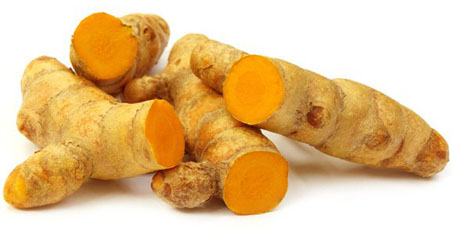What Is Turmeric?

Turmeric comes from the root of the Curcuma longa plant and has a tough brown skin and a deep orange flesh. Turmeric has a peppery, warm and bitter flavor and a mild fragrance slightly reminiscent of orange and ginger, and while it is best known as one of the ingredients used to make curry, it also gives ballpark mustard its bright yellow color. Turmeric has long been used as a powerful anti-inflammatory in both the Chinese and Indian systems of medicine.
Turmeric Plant and Cultivation
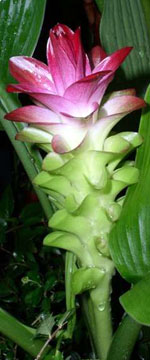
Turmeric belongs to Zingiber family. It can grow from sea level to 1500mm, it needs 20-30°C temperature with rainfall 1500mm or more per annum. It thrive on sandy or clayey loam, it can also grow on light black, loam red soils to clay loam. Turmeric is an annual crop, but conversion Period requires 2 years. It requires 2500 Kg rhizomes per acre. It requires 2 years, minimum tillage, beds of 15cm height with 50 cm spacing between bed. It can grow in April-May under organic condition it requires 5-6 tons/hectare FYM. With neem cake 2 tons/hectare. Some time it catch shoot borer, leaf spot and leaf blotch are controlled by 1% Bordeaux mixture spray. Its varieties are matures at different times ranging from 7-9 months. Its average yield is 20-25 tons of green turmeric. Mother Rhizomes are used as seed material. Its curing involves boiling of rhizomes in fresh water and drying under the Sun. Under artificial condition it should be dried at 60°C. Dried turmeric has poor appearance and rough dull color outside the surface with scales. Manual or mechanical rubbing and polishing improve appearance. Occasionally flower comes on cylindrical spites bearing numerous greenish white bracts are narrow, yellowish white in color. Most cultivated varieties are sterile tripods.
Turmeric Description
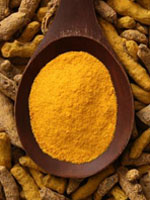
A relative of ginger, turmeric is a perennial plant that grows 5 to 6 feet high in the tropical regions of Southern Asia, with trumpet-shaped, dull yellow flowers. Its roots are bulbs that also produce rhizomes, which then produce stems and roots for new plants. Turmeric is fragrant and has a bitter, somewhat sharp taste. It grows mainly in tropical locations. It is commonly used in Asian food. You probably know turmeric as the main spice in curry. It has a warm, bitter taste and is frequently used to flavor or color curry powders, mustards, butters, and cheeses. But the root of turmeric is also used widely to make medicine. It contains a yellow-colored chemical called curcumin, which is often used to color foods and cosmetics.
Uses of Turmeric
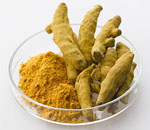
Turmeric is a gift of nature and has several hidden benefits, apart from being an essential food ingredient and being popular among Pakistani spices. It is used as condiment, dye and cosmetic. It is used since prehistoric times to cure the internal and external wounds and many other diseases. Powdered turmeric is known for healing body pains. Turmeric can be used in fresh as well as in the dried form.
10 Health Benefits of Turmeric
1 - Alzheimer’s Disease - Due to its anti-inflammatory and pain-relieving properties, it is not surprising that Turmeric is now being used as an effective natural remedy for Arthritis pain.
2 - Arthritis - Due to its anti-inflammatory and pain-relieving properties, it is not surprising that Turmeric is now being used as an effective natural remedy for Arthritis pain.
3 - Asthma - Since turmeric is an anti-inflammatory, it can help reduce the inflammation associated with asthma.
4 - Cancer - Several recent studies have found that Turmeric can induce apoptosis, a process that triggers the self-destruction and elimination of damaged (cancerous) cells. Studies suggest that daily consumption of Turmeric powder or supplements combined with a balanced, nutritious diet may help prevent or even destroy cancer cells.
5 - Colds and Flu - Turmeric’s anti-bacterial, anti-viral, and anti-fungal agents can help our body fight against colds, cough and flu.
6 - Diabetes - The antioxidant agents in Turmeric help reduce insulin resistance, which may prevent the onset of Type-2 Diabetes.
7 - Inflammation - Turmeric’s key ingredient Curcumin is known for its anti-bacterial and anti-inflammatory properties. Therefore, Turmeric powder can help in healing cuts, wounds, and other skin infections including boils.
8 - Weight Loss - Curcumin in Turmeric powder has been found to help increase the flow of bile, an important component in the breakdown of dietary fat.
9 - Reduces Cholesterol Level - Using turmeric as a food seasoning can reduce serum cholesterol levels. It is a known fact that high cholesterol can lead to other serious health problems. Maintaining a proper cholesterol level can prevent many cardiovascular diseases.
10 - Immunity Booster - Turmeric contains a substance known as lipopolysaccharide, which helps stimulate the body’s immune system. Its antibacterial, antiviral and antifungal agents also help strengthen the immune system. A strong immune system lessens the chance of suffering from colds, flu and coughs.
Producing Countries of Turmeric

India is the major producer of turmeric, and it is also the major user of its own production. Other producers in Asia include Pakistan, Bangladesh, Sri Lanka, Taiwan, China, Burma(Myanmar), and Indonesia. Turmeric is also produced in the Caribbean and Latin America: Jamaica, Haiti, Costa Rica, Peru, and Brazil.
Consuming Countries of Turmeric

Asian countries usually consume a large share of their own produce and India stands at the top in this case also. The major importing countries of turmeric are Japan, Sri Lanka, Iran, United Arab Emirates, United States, United Kingdom, Ethiopia.
Recipe for Beverages with Turmeric
Golden Milk
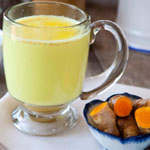
Ingredients: A: 2 cups coconut milk B: 1 teaspoon turmeric C: 1/4 teaspoon black pepper D: 1″ piece of ginger sliced E: Raw honey to sweeten, if desired
Preparation MethodA: In a saucepan add all ingredients (except honey, if using) and whisk to combine. B: Heat over medium heat until it starts to bubble C: Then turn heat down to low and simmer for about 5 minutes so the flavors meld D: Strain out the ginger E: Add honey and stir F: Makes 2 servings
Recipe for Cooking with Turmeric
Bulgur Wheat Balls
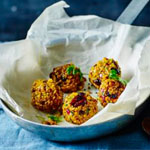
Ingredients: A: 200g/7oz bulgur wheat B: 2 medium free-range eggs C: 1 small red onion, finely chopped D: 2 heaped tsp turmeric E: 2 heaped tsp ground cumin F: 1 tsp ground cinnamon G: ½ tsp cayenne pepper H: 20g/½oz fresh coriander, chopped I: 80g/3oz dried cranberries J: salt and pepper, to taste K: 4 tbsp olive oil
Preparation MethodA: Cook the bulgur wheat for a little longer than the packet instructions say, so it’s very puffy (about 20 minutes). Rinse under cold water to remove the starch and leave to drain until cool enough to handle. B: Preheat the oven to 180C/160C Fan/Gas 4. C: Mix all the ingredients, except the oil, for the bulgur wheat balls together. Squeeze the mixture using your hands so it sticks together. Shape the mixture into golf-ball sized balls or patties, don't worry about making them into perfect balls. Place in the fridge for 30 minutes. D: Heat a large frying pan and add the oil, once hot add the balls and fry or 3-4 minutes. Finish them in the oven for 5-10 minutes if you like.
Recipe for Dessert with Turmeric
Semolina Turmeric Cake
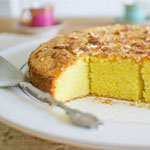
Ingredients: A: 1 1/2 cups semolina flour B: 1/2 cup all-purpose flour C: 1 teaspoon ground turmeric D: 1 1/2 teaspoons baking powder E: 1 1/8 cups white sugar F: 1 cup milk G: 1/2 cup vegetable oil H: 1 tablespoon pine nuts
Preparation MethodA: Preheat oven to 350 degrees F (175 degrees C). Grease a 9 inch round baking pan. B: In a small bowl, mix semolina, flour, turmeric and baking powder. Set aside. C: In a large bowl, stir milk and sugar until sugar is dissolved. Add flour mixture and oil and beat with an electric beater at medium speed for 5 minutes. This step is essential, do not use any shortcuts. D: Pour into a prepared 9 inch round pan. Sprinkle top with pine nuts. Bake at 350 degrees F (175 degrees C) for 25 to 35 minutes, or until wooden pick inserted in center comes out dry.

